Recent Fire Damage Posts
Keep These Fire Safety Tips in Mind to Prevent Outdoor Fires | SERVPRO® of Biddeford-Saco
7/21/2022 (Permalink)
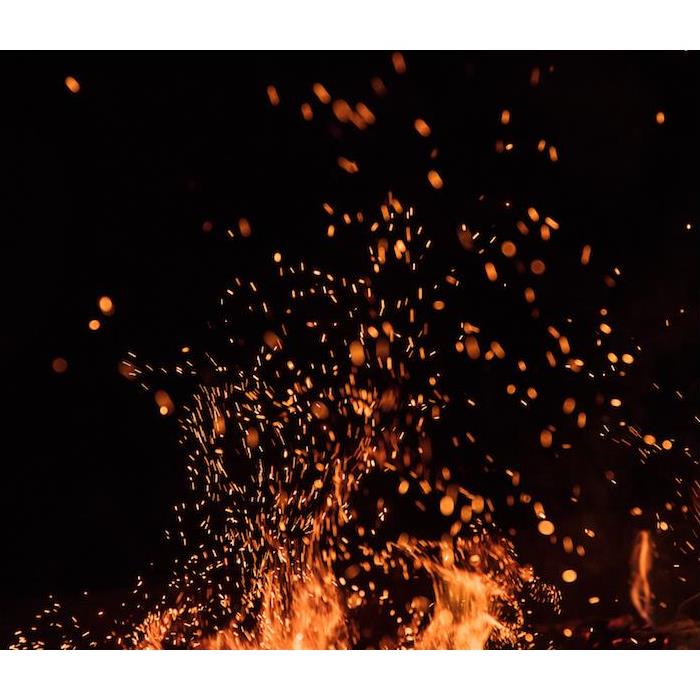 If you have experienced fire or smoke damage, contact SERVPRO of Biddeford-Saco.
If you have experienced fire or smoke damage, contact SERVPRO of Biddeford-Saco.
There’s nothing better than relaxing by the campfire in your backyard on a warm summer night. Hot dogs, s’mores and scary stories are just a few festivities you can enjoy by the fire.
We light a fire in our backyards and campgrounds for recreation, a meal, pest control or as a way to clear out debris, but even the safest fire has its own set of hazards. The National Park Service states that around 85% of wildfires are started by humans.
Maine has experienced its fair share of wildfires, and while some are caused by weather or climate, the vast majority are caused by humans. Because Maine is primarily forested, it’s good to understand what hazards a backyard campfire can produce if it gets out of hand.
If local rules allow, you can still burn your leaves, light your tiki torches, roast your s’mores and barbecue your burgers. Keeping safety precautions in mind every time you burn can allow you to enjoy your backyard fires and minimize your risk of flames.
<h3fire-hazards">Recreational Fire Hazards
Any kind of fire poses hazards, but grills, campfires and fire pits are common culprits of outdoor fires. Grills are responsible for approximately 8,800 home fires each year, mostly due to improper usage. Before lighting up the grill, check your gas lines and propane tanks and never leave food that’s cooking left unsupervised.
When preparing your campfire, find a safe place away from any buildings or vehicles, and to start your flame, only use a match or lighter. Once your campfire is lit, only use wood to keep your fire burning, and keep an eye on your fire even after you are done enjoying your s’mores.
Fire pits are a simple way to create a flame similar to a campfire, but even though this equipment is easy to use, you should still use the same caution as a regular campfire. If your fire pit is portable, make sure not to light it on a wood deck or near any overhanging trees.
While it might seem like an easy way to get rid of any trash or debris, you should only burn approved firewood.
<h3outdoor-fire-hazards">Other Outdoor Fire Hazards
Even with their hazards, flames and flammable items can still be utilized. If you live somewhere that collects lots of dead leaves in the fall and you don’t have a way to dispose of them, burning these leaves can be the most effective way to cleaning up your yard.
Before you burn anything, understand your area’s local burn laws to ensure you’re able to burn any debris. Be aware of burn bans, and consider applying for a permit. When you have a permit in Biddeford, you are able to burn debris 50 feet away from any structures at any time between 9 a.m. and 12 midnight.
Burning dead leaves and plants is a great way to protect your property from wildfires, and planning your landscape in a strategic way can stop fires before they get close to your home. Knowing what you can burn and understanding the general fire safety recommendations can help keep backyard flames at bay.
You may store gas in a shed or garage to fuel your yard equipment, but poor handling can have disastrous consequences. Be sure to store gas in approved containers and place these containers where your kids can’t reach them. Gas should be used safely and as intended, too—so, if you’re having difficulties starting your campfire, don’t turn to gasoline for support.
Any time you start a fire outside, be aware of our area’s weather conditions and local guidelines. If it’s a dry or windy day, save your marshmallows for another occasion and light your fire at another time.
Give SERVPRO a call if an outside fire causes damage to your property. Our team is trained to tackle any kind of fire damage no matter how severe. Our goal is to restore as much of your property as we can and as quickly as we are able.
Burn safely outdoors. And save some chocolate for us! If you have experienced fire or smoke damage, contact us today to get restoration started faster.
The Top Causes of Commercial Damage | SERVPRO® of Biddeford-Saco
6/20/2022 (Permalink)
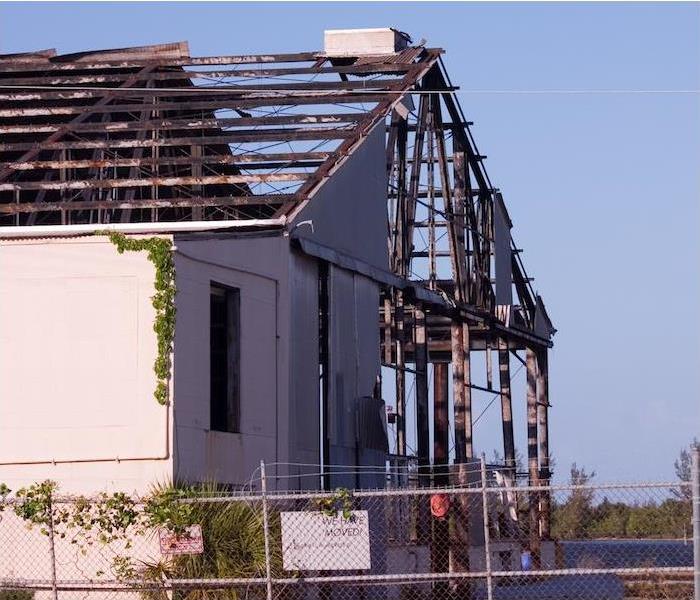 SERVPRO of Biddeford-Saco is your local commercial disaster team. Contact us to learn more about our commercial damage restoration services.
SERVPRO of Biddeford-Saco is your local commercial disaster team. Contact us to learn more about our commercial damage restoration services.
Businesses have been a part of American lives since our country’s founding. Each and every citizen in our country interacts with businesses in some way, whether as a customer or as an employee.
Even without the added stress of a calamity, owning a business entails plenty of daily duties. When a business is involved in an accident, though, the financial consequences can be severe.
According to The National Center for Environmental Information, storm damages in the United States have steadily increased in the past 40 years, indicating how costly storm damage can be.
Just last year in Biddeford, heavy rain from a storm on Halloween caused damage to the Biddeford RiverWalk. Storms of this caliber are not uncommon to York County.
Because weather-related disasters like this are a hazard in the area, it’s critical that every business understands the many types of storm damage and how to avoid future property destruction.
Water DamageAn abundance of water or moisture is a common source of commercial damage. Water damage can occur naturally, such as from a rainstorm, or from something internal, like plumbing leaks or a malfunctioning appliance. Each of these types of water damage can create a hefty bill on the company’s behalf.
Long-term water damage could be caused by leaks inside the building. It’s vital to keep an eye out for signs of plumbing leaks, such as warping or browning inside the walls and floors. Following these steps on a regular basis will help you stay ahead of the damage and prevent future repairs.
To avoid extra damage expenditures, you should inspect your plumbing for leaks as well as your walls and flooring for warping or browning on a regular basis.
Storm DamageCommercial damage from storms is also quite common, and a storm can easily take out power lines, spread debris and quickly impact a row of businesses in a single neighborhood.
Commercial roofs and building siding can be swiftly ripped off by storms with powerful winds.
Winds can reach 85 miles per hour during a typical storm. Winds of this force can easily knock down structures, move heavy vehicles and rip trees from the ground.
One preventive measure would be to install storm-protective window coverings, and a viable roof for your business can be a good idea to help avoid storm damage, but these steps can quickly add up in cost.
Alternative preventive actions, such as consistently monitoring your building and checking up on the seals on your windows and doors, can lead to significant savings and prevent further damage. Consider clearing the yard of your property for hazards that could be picked up and scattered during a storm.
Know Who to Turn ToStorms of many varieties can strike at any time and inflict significant commercial damage. These catastrophic circumstances frequently force businesses to close for repairs, and in other circumstances, permanently close.
Never fret! SERVPRO is here at any time, waiting to take your call. Our team of trained restoration specialists will respond with haste and help you create and implement a restoration plan.
If you have experienced damage to your business or want to learn more about our commercial damage restoration services, contact us today. We’re here to act fast, 24⁄7.
Simple Ways to Prevent Home Fires | SERVPRO® of Biddeford-Saco
6/6/2022 (Permalink)
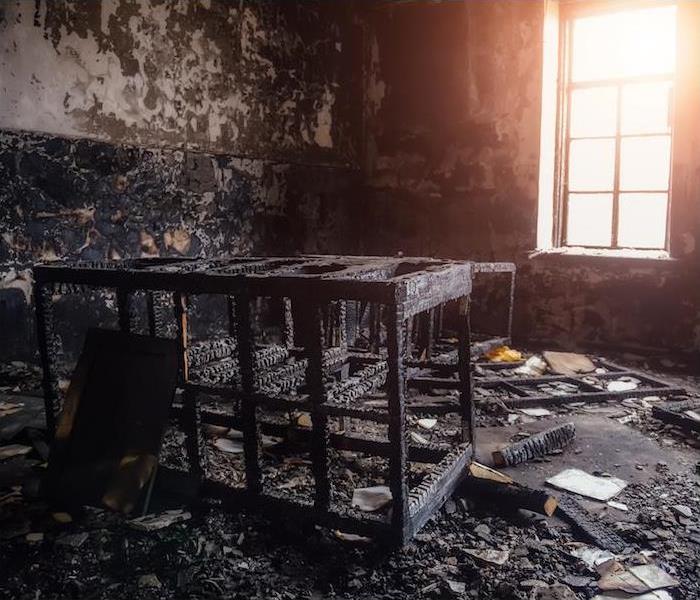 If your home is damaged in a house fire, SERVPRO of Biddeford-Saco is here to help. Contact us for any fire restoration needs.
If your home is damaged in a house fire, SERVPRO of Biddeford-Saco is here to help. Contact us for any fire restoration needs.
Fires are incredibly pervasive in the United States, occurring somewhere across the country every few seconds. In fact, so far this year, the American Red Cross has responded to more than 22,000 house fires—and that’s only a small portion of overall fires.
Though smoke detectors are still one of the most functional strategies to avoid fire-related deaths and property damage, there are various other precautions you can take to avoid the occurrence of a fire in your home.
Clean Your Clutter??Our homes can easily become cluttered. When it comes to fire prevention, unattended loose, flammable things in corridors and storage places, such as clothing, spare blankets and other fabrics, are extremely harmful.
You can also easily cause a fire if you leave clothes unattended near gas burners or water heaters. It is better to leave clear, clean spaces in your home to avoid hazards getting in the way in the event you need to escape your home quickly. If a fire does break out, it will spread more slowly since there will be fewer flammable things in its path.
Electrical fires starting from appliances or kitchen materials are some of the most common causes of home fires in Maine. This shows how important it is to double-check your oven and stovetop BEFORE you leave the kitchen! Unplug any appliances you aren’t using, and don’t overload plugs.
Finally, make sure there is enough space between your furniture, carpets and wall outlets so they don’t rub together or tangle to prevent flammable spaces.
Protect the Exterior of Your HomeThere are a variety of techniques to improve the exterior of your home’s fire resistance. You can clear a way for firefighters to enter your home more readily in the event of a fire by using deliberate landscaping practices.
It is advised that you have at least 30 feet of defensible space outside your home at all times—and that you replace flammable substances with more appropriate materials such concrete, brick and gravel. Make sure to clean any waste that may obstruct the firefighters’ path.
Plan for Outdoor Water AccessibilityIf you can no longer safely access your home’s water source, it can be helpful to have a backup exterior water setup prepared for emergencies.
Consider purchasing extra-long garden hoses or a complete sprinkler system in case of a fire-related emergency.
These simple procedures can make a great difference in minimizing your fire risk and ensuring that you are better prepared in the event of a home fire.
We spend a lot of time in our houses, creating memories with the people we care about and maintaining the home itself. To avoid the risk of a fire, we must also keep our homes clean and take the effort to prevent dangers.
If you have encountered fire damage or want to learn more about our fire damage restoration services, call us today. We’re here to act fast, 24⁄7.
The 4 Components of Fire, and 4 Ways to Put it Out | SERVPRO® of Biddeford-Saco
1/21/2022 (Permalink)
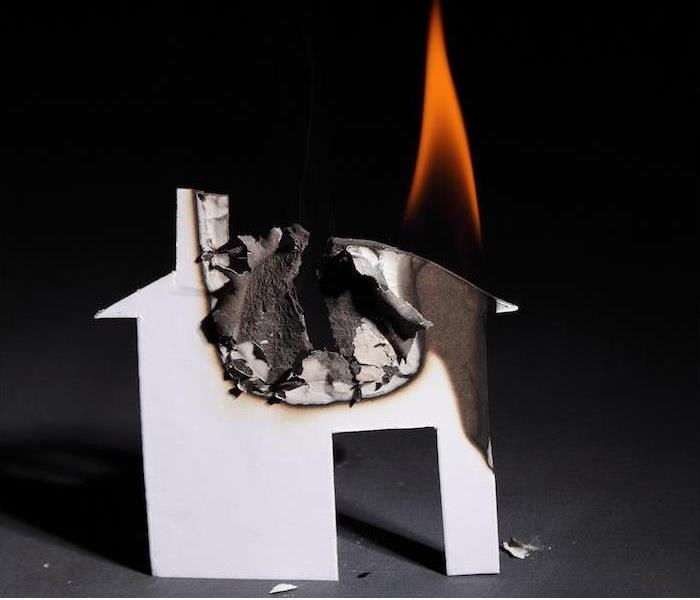 If your home or business has any damage, SERVPRO of Biddeford-Saco is ready around the clock to help you recover.
If your home or business has any damage, SERVPRO of Biddeford-Saco is ready around the clock to help you recover.
Quick: What’s a tetrahedron? If you don’t recall from junior high, it’s another name for a pyramid—a three-dimensional, triangular shape with four equal sides.
Why the sudden geometry quiz? Surprisingly, it relates to fire safety.
See, fire needs four components, known collectively as the fire tetrahedron, to occur and survive. Without these elements working together, fire can’t start—and on the opposite side of that coin, counteracting these elements is key to putting a fire out.
The 4 Things a Fire Needs to LiveFuel—something to ignite. There has to be something to burn. This can be organic or inorganic material—woods, plastics, fibers and much more are all perfect fuel sources for fire.
Heat—enough to cause combustion. The amount of necessary heat varies from substance to substance, but almost everything has a threshold at which it will either ignite or melt.
Oxygen. Fires react with nearby oxygen to produce an expanding series of chemical reactions; in other words, oxygen feeds the fire so it can continue to grow, generating products of combustion (like smoke and carbon monoxide) in the process.
Chemical Chain Reaction. The continual cycle and feeding of heat, fuel and oxygen combine to produce a chain reaction, which will perpetuate the fire as long as it goes undisturbed. In other words, the chemical reaction is the natural force of the fire that, once started, will continue until something affects its ability to proceed.
The 4 Ways to Stop a FireCool it. This is likely the first thing you think of. Buckets, gallons or hoses full of water are often the solution, used to cool the fuel (the burning material) to a point at which combustion is no longer possible. Cooling the material to a thermal balance means the rate at which heat is generated can’t compete with the rate at which the heat is lost. Some water will evaporate or boil, so a great deal of it must be used to adequately cool the fuel.
Smother it. If a fire can’t breathe, it can’t live. The process of smothering a fire is one of depriving it of the oxygen it needs to continue. This can be as simple as snuffing a candle, or as complicated as introducing carbon dioxide into the fire’s vicinity, which chemically suffocates the oxygen.
Starve it. If a fire burns with no outside interference, this is the likely natural end. It will burn until it runs out of adequate fuel—be it grass, wood or other material. The proactive method for starving a fire, then, is removing a fire’s fuel source while it’s still trying to consume it. For example, if a fuel tank is on fire, the fuel can be drained from it. In the case of a wildfire, a containment can be attempted by actually burning and scorching areas on purpose, to create a boundary of starvation for the fire.
Interrupt the chain reaction. Chemical agents such as halon can effectively put a stop to fire by chemically disrupting the reaction that multiplies to keep a fire going. While halon itself is very effective and safe around humans, it has an elevated potential for ozone depletion, thus making it an environmental threat. For this reason, its production has been halted, though the existing supply is still legally bought, sold and sometimes recycled.
If the fire tetrahedron makes a wreck of your home or business, we’re ready around the clock to help you recover. Contact SERVPRO anytime for fast, thorough cleanup and recovery after a fire.
Smoke and Soot Cleanup
12/27/2021 (Permalink)
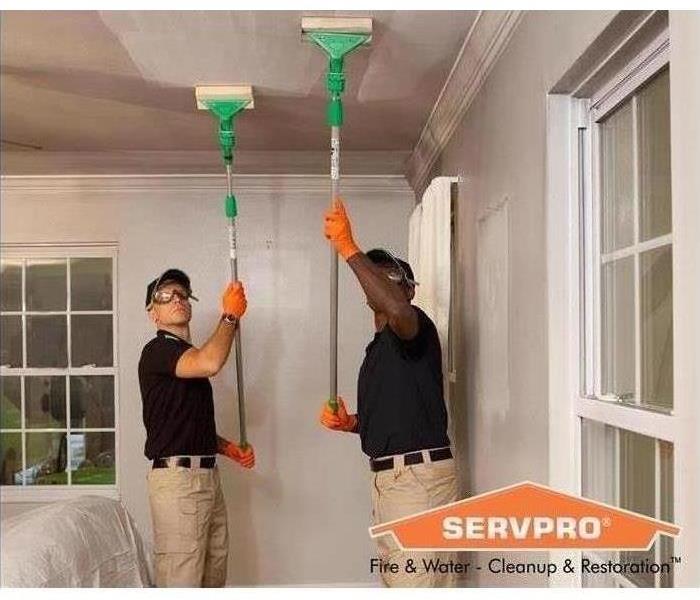 SERVPRO employees cleaning soot with chem sponges.
SERVPRO employees cleaning soot with chem sponges.
Smoke and soot is very invasive and can penetrate various cavities within your home, causing hidden damage and odor. Our smoke damage expertise and experience allows us to inspect and accurately assess the extent of the damage to develop a comprehensive plan of action.
Smoke and soot facts:
- Hot smoke migrates to cooler areas and upper levels of a structure.
- Smoke flows around plumbing systems, seeping through the holes used by pipes to go from floor to floor.
- The type of smoke may greatly affect the restoration process.
Different Types of Smoke
There are two different types of smoke–wet and dry. As a result, there are different types of soot residue after a fire. Before restoration begins, SERVPRO of [[Franchise Name]] will test the soot to determine which type of smoke damage occurred. The cleaning procedures will then be based on the information identified during pretesting. Here is some additional information:
Wet Smoke – Plastic and Rubber
- Low heat, smoldering, pungent odor, sticky, smeary. Smoke webs are more difficult to clean.
Dry Smoke – Paper and Wood
- Fast burning, high temperatures, heat rises therefore smoke rises.
Protein Fire Residue – Produced by evaporation of material rather than from a fire
- Virtually invisible, discolors paints and varnishes, extreme pungent odor.
Our Fire Damage Restoration Services
Since each smoke and fire damage situation is a little different, each one requires a unique solution tailored for the specific conditions. We have the equipment, expertise, and experience to restore your fire and smoke damage. We will also treat your family with empathy and respect and your property with care.
Have Questions about Fire, Smoke, or Soot Damage?
Call Us Today – (207)283-4428
Thanksgiving Fire Safety
11/23/2020 (Permalink)
What day do you think is the busiest for fire departments? Thanksgiving! The typical American tradition of celebrating Thanksgiving usually consists of gathering and enjoying a big meal with your friends and family. With a big meal, comes lots of cooking! Especially this as many people will be home cooking, the number of home fires involving cooking equipment will probably spike over 4 times the daily average on Thanksgiving. If you are hosting or visiting, be sure to follow these preventive safety tips when preparing this year’s Thanksgiving feast!
- Ensure your stove is clean and oven have no build up of grease or food. It is recommended to clean your stove and oven the weekend before.
- Never leave the kitchen when cooking. Always attend and stay in the kitchen when you are cooking on the stovetop. Items in the oven may not require as much attention but food on the stovetop will need constant monitoring in case of spillage or splatter.
- Remain home while cooking the turkey. Turkeys tend to take a longer period to cook so it is important to be sure you are home, staying inside and checking on it frequently. The last thing anyone wants on Thanksgiving is a burnt turkey that may catch fire.
- Make sure your home is stocked with flame-resistant oven mitts, potholders and lids near you while cooking. With these handy you can smother any flames before they get out of control.
- If the unfortunate event a fire does occur, turn off all heat and keep the oven door closed. The fire will burn out on its own. Once the fire has gone out, open your windows before carefully opening the oven door to release any smoke. If the fire does not go out, leave the house immediately and call 911.
- Double check all fire alarms have working batteries and are working. Review the fire escape route in the event of a fire.
Stay safe this holiday season and be sure to prepare and practice preventive steps on fire safety in your home. SERVPRO of Biddeford-Saco and The Sebago Lakes Region is always here in case of a home fire and we will ensure that your home will go back to normal "Like it never even happened."
Fire Mitigation Requires A Call to Action
11/10/2020 (Permalink)
When fire damage occurs, its important for cleanup and restoration to happen as quickly as possible. The sooner SERVPRO of Biddeford-Saco and The Sebago Lakes Region team arrives to help you and your home the quicker your home will return to normal.
Contents Cleaning: SERVPRO is dedicated to restoring your contacts to a preloss condition. All contents will be professionally cleaned and deodorized. Such elements in your home such as rugs, furniture, draperies and upholstery. We offer services that include dry and wet cleaning services. Our team has what it takes to return your home to normal.
Deodorization: Nobody likes the smell of the after math of a house fire – we got you covered. We have specialized services, equipment and cleaning products that will completely rid the property of any odors or smell from fire or smoke damage.
Structural Cleaning: After a fire, there is smoke or soot damage to the ceilings, walls, woodwork, carpeting and floors which will need thorough cleaning. Our experienced team of Technicians will evaluate to determine the severity of damage. They then will use specific and specialized equipment and cleaning products to clean and protect the different surfaces.
With years of experience and care for your home, SERVPRO of Biddeford-Saco and The Sebago Lakes Region will know what to do after a fire. We will help you through the process of restoring your home.
Fire Damage in York County
8/13/2019 (Permalink)
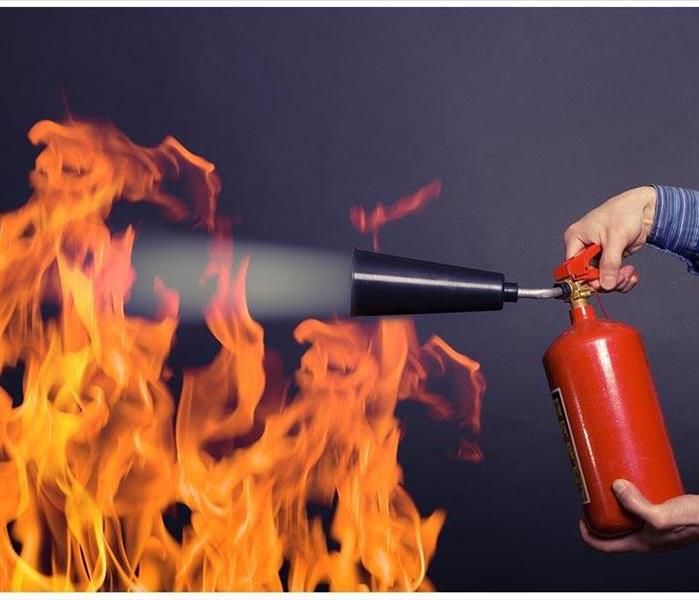 Here to help fire damage in Kennebunk, Kennebunkport, Biddeford, Saco, Old Orchard Beach, Arundel, Lyman and Dayton.
Here to help fire damage in Kennebunk, Kennebunkport, Biddeford, Saco, Old Orchard Beach, Arundel, Lyman and Dayton.
Smoke and soot is very invasive and can penetrate various cavities within your home, causing hidden damage and odor.
It is always important to remember to test and change you smoke alarm batteries every year.
Our smoke damage expertise and experience allows us to inspect and accurately assess the extent of the damage to develop a comprehensive plan of action.
Facts and FYIs:
- Hot smoke migrates to cooler areas and upper levels of a structure.
- Although it may not seem major there could hidden extensive damage
- Smoke flows around plumbing systems, seeping through the holes used by pipes to go from floor to floor.
- Although room doors may be closed you could be surprised by the distance soot and smoke damage can travel
- The type of smoke may greatly affect the restoration process.
- Did you know we have special designed sponges for soot and smoke cleaning that we bring on free inspections that help detect just how far and how bad the damage could possibly be.
Wet Vs. Dry Smoke
There are two different types of smoke–wet and dry. As a result, there are different types of soot residue after a fire. Before restoration begins, SERVPRO of Biddeford-Saco will test the soot to determine which type of smoke damage occurred. The cleaning procedures will then be based on the information identified during pretesting. Did you know different types of interior paint have to be cleaned differently? That is why it is important to call an expert before you potentially make it worse.
Different Kinds of Smoke/Soot Damage:
- Wet Smoke – Plastic and Rubber: Low heat, smoldering, pungent odor, sticky, smeary. Smoke webs are more difficult to clean.
- Dry Smoke – Paper and Wood: Fast burning, high temperatures, heat rises therefore smoke rises.
- Protein Fire Residue – Produced by evaporation of material rather than from a fire (typically burnt foods): Virtually invisible, discolors paints and varnishes, extreme pungent odor.
Breakdown of our Services:
As you can see each smoke and fire damage situation is different. We handle all inspections with high detail and care as each one requires a unique solution tailored for the specific conditions. We have the equipment, expertise, and experience to restore your fire and smoke damage. We will also treat your family with empathy and respect and your property with care.
Have Questions about Fire, Smoke, or Soot Damage?
Call Us Today – 207-283-4428
Excavation work after a fire
7/25/2018 (Permalink)
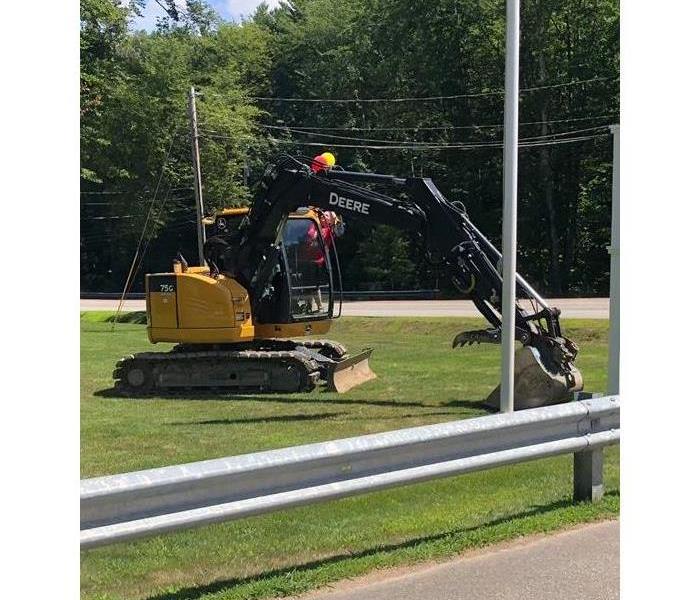 The SERVPRO of Biddeford-Saco excavator on display at a Touch A Truck event where kids and parents got the opportunity to get up close and personal
The SERVPRO of Biddeford-Saco excavator on display at a Touch A Truck event where kids and parents got the opportunity to get up close and personal
On Saturday July 21st, SERVPRO of Biddeford-Saco participated in a local Touch-A-Truck event. We showed up in style with our green tablecloth, lots of snacks and popsicles, and most of all our excavator.
You might be asking why does a restoration company have an excavator? SERVPRO of Biddeford-Saco has a lot of unique features such as our ability to remove asbestos. Another unique feature of ours is our skills in not only remediation, but also rebuilds. Our excavator can be a help after a fire to help clear the land, and start a rebuild and make the property "Like it never even happened."
Dealing with a fire can be tough, but having one company be able to come through and take care of the project from start to finish can take a lot of stress off of the homeowner. And if you're going to pick one company to do it, SERVPRO of Biddeford-Saco is ready to step up to the plate.
Dealing with after the fire
7/16/2018 (Permalink)
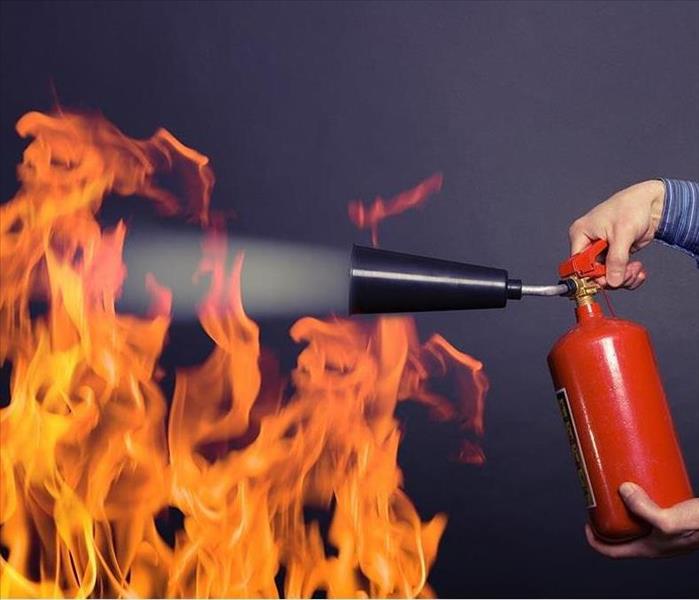 Trying to deal with a fire yourself can be exhausting, let the professionals at SERVPRO of Biddeford-Saco help
Trying to deal with a fire yourself can be exhausting, let the professionals at SERVPRO of Biddeford-Saco help
When a fire rips through your home or business, the smoke damage and Fire Damage can be overwhelming. You don't know where to begin with your fire cleanup. You're dealing with a smoke smell that won't go away, smoke damage, soot damage, and fire damage. Things you didn’t imagine worrying about.
Fire in the home and fire in the business can cause extensive damage. Fire damage restoration is not a job you should handle on your own. SERVPRO of Biddeford-Saco professionals can deal with commercial and residential fire damage. In the Biddeford-Saco area, we can assist you with fire damage restoration from start to finish, well be there with you.
(207) 283-4428
Decisions after the Fire
Once the fire is put out and the fire department considers the property to be safe, the home or business, you have decisions to make. You may think you can board up your property and begin the fire cleanup process, but this is a job for the professionals. When residential or commercial fire damage strikes, you will be left with fire damage, soot damage, and smoke damage. Your contents may be destroyed, and you may be left in distraught.
The smoke smell will be so heavy you are afraid it will never go away. SERVPRO of Biddeford-Saco can handle the fire cleanup and fire damage restoration job for you. We begin by choosing to board up your windows for safety purposes after evaluating the extent of fire damage after you have experienced fire in the home or business.
We will be able to deal with every aspect of your fire cleanup job after there has been a fire in the house or fire in the business. The process begins by using various types of industrial chemicals to clean all the surfaces that have been affected by fire damage, soot damage, and smoke damage.
We can handle commercial fire damage in addition to residential damage. The size of the property doesn't matter. We will put the processes in place to board up the property to protect it from intrusion, eliminate the smoke smell, and tackle every type of damage that has occurred.
The use of the proper tools, technique, and cleaning products will effectively address soot damage, as well as every other type of damage that has taken place.
If it is possible to salvage your property after residential or commercial fire damage, SERVPRO of Biddeford-Saco will help you to put this terrible time behind you.
Residential and commercial fire damage isn't easy to repair, but a professional service will be with you every step of the way to help you cope during this difficult time. You will be able to get back to a normal life once your cleanup and restoration is over.
Staying Safe this 4th of July
7/2/2018 (Permalink)
Summer has finally arrived! That means BBQ's, long days floating in pools or lakes, spending time with family, and most excitingly FIREWORKS!!
As exciting as fireworks can be, it is very important to be sure to follow simple safety tips to avoid the risk of fire. Check out these firework safety tips brought to you by the National Council on Firework Safety:
- Obey all local laws regarding the use of fireworks.
- Know your fireworks; read the cautionary labels and performance descriptions before igniting.
- A responsible adult should ALWAYS supervise all firework activities. Never give fireworks to children.
- Alcohol and fireworks do not mix. Save your alcohol for after the show.
- Wear safety glasses when shooting fireworks.
- Light one firework at a time and then quickly move away.
- Use fireworks OUTDOORS in a clear area; away from buildings and vehicles.
- Never relight a “dud” firework. Wait 20 minutes and then soak it in a bucket of water.
- Always have a bucket of water and charged water hose nearby.
- Never carry fireworks in your POCKET or shoot them into METAL or GLASS containers.
- Do not experiment with homemade fireworks.
- Dispose of spent fireworks by wetting them down and place in a metal trash can away from any building or combustible materials until the next day.
- FAA regulations PROHIBIT the possession and transportation of fireworks in your checked baggage or carry-on luggage.
- Report illegal explosives, like M-80s and quarter sticks, to the fire or police department.
Be sure to always check with your local fire department on the air quality levels to avoid the risk of fires
As long as you follow safety tips, you are guaranteed to have a fun and exciting firework show to enjoy with friends and family!
Smoke and Soot Cleanup
6/19/2018 (Permalink)
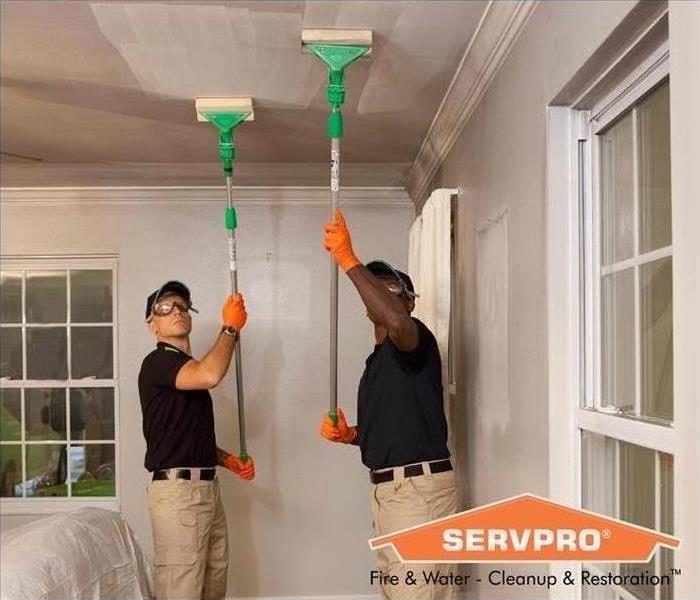 Smoke and Soot Damage Can Cause a Pervasive Odor in Your Home
Smoke and Soot Damage Can Cause a Pervasive Odor in Your Home
Smoke and soot is very invasive and can penetrate various cavities within your home, causing hidden damage and odor. Our smoke damage expertise and experience allows us to inspect and accurately assess the extent of the damage to develop a comprehensive plan of action.
Smoke and soot facts:
- Hot smoke migrates to cooler areas and upper levels of a structure.
- Smoke flows around plumbing systems, seeping through the holes used by pipes to go from floor to floor.
- The type of smoke may greatly affect the restoration process.
Different Types of Smoke
There are two different types of smoke–wet and dry. As a result, there are different types of soot residue after a fire. Before restoration begins, SERVPRO of Biddeford-Saco will test the soot to determine which type of smoke damage occurred. The cleaning procedures will then be based on the information identified during pretesting. Here is some additional information:
Wet Smoke – Plastic and Rubber
- Low heat, smoldering, pungent odor, sticky, smeary. Smoke webs are more difficult to clean.
Dry Smoke – Paper and Wood
- Fast burning, high temperatures, heat rises therefore smoke rises.
Protein Fire Residue – Produced by evaporation of material rather than from a fire
- Virtually invisible, discolors paints and varnishes, extreme pungent odor.
Our Fire Damage Restoration Services
Since each smoke and fire damage situation is a little different, each one requires a unique solution tailored for the specific conditions. We have the equipment, expertise, and experience to restore your fire and smoke damage. We will also treat your family with empathy and respect and your property with care.
Have Questions about Fire, Smoke, or Soot Damage?
Call Us Today – 207-283-4428
Cooking Safety Tips
7/24/2017 (Permalink)
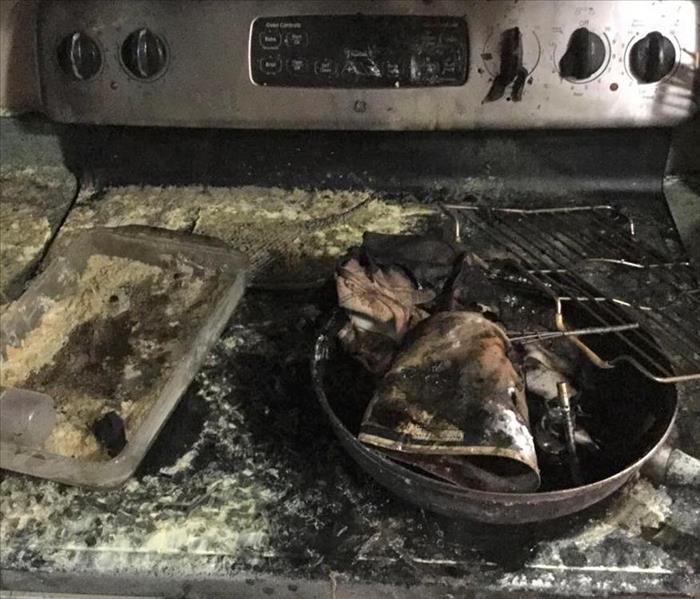 This stovetop of a kitchen fire that started due to grease.
This stovetop of a kitchen fire that started due to grease.
Cooking fires are the #1 cause of home fires and home injuries according to the National Fire Protection Association aka NFPA. The leading cause of fires are unattended cooking.
- While cooking you should never leave the kitchen and if you have to, make sure you turn off the stovetop.
- Keep anything that can catch fire away from the stovetop; mitts, utensils, food packaging, towels, etc.
- Be sure that your smoke alarms are working properly and that you have a fire extinguisher near by.
- If a small fire arises on the stove top smother the fire by sliding the lid over the pan and turn off the stovetop.
- For an oven fire keep door shut and turn off heat.
- Stay alert!
"Cook with Caution" No matter the size of the kitchen fire it can be overwhelming. If you do not feel comfortable with fighting a small stovetop fire, exit the house and call 9-1-1.
SERVPRO of Biddeford-Saco is open 24/7- If you experience a kitchen fire we can help cleanup whether it be smoke, soot, or fire damage.
For more tips about kitchen fires visit the National Fire Protection Association at-http://www.nfpa.org/public-education/by-topic/top-causes-of-fire/cooking/safety-messages-about-cooking
Biddeford, Saco, Kennebunks Smoke and Soot Cleanup
2/28/2017 (Permalink)
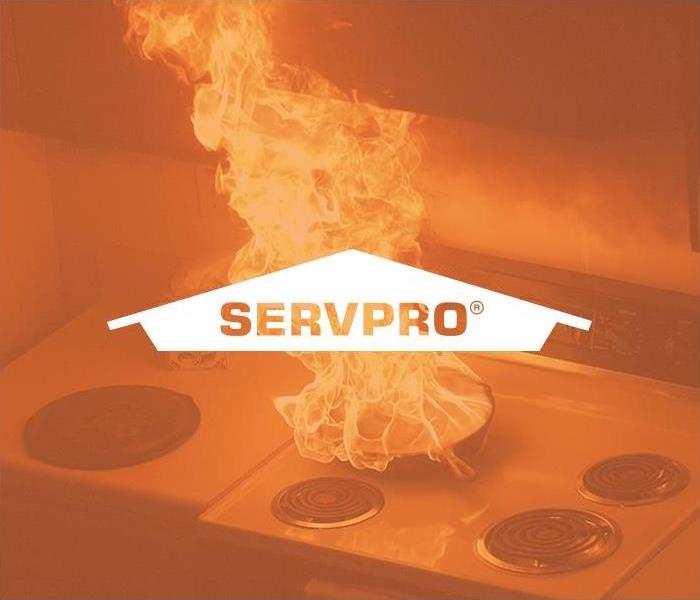 Serving Kennebunk, Kennebunkport, Arundel, Biddeford, Saco, Old Orchard Beach, Dayton, Lyman and beyond!
Serving Kennebunk, Kennebunkport, Arundel, Biddeford, Saco, Old Orchard Beach, Dayton, Lyman and beyond!
Smoke and soot is very invasive and can penetrate various cavities within your home, causing hidden damage and odor. Our smoke damage expertise and experience allows us to inspect and accurately assess the extent of the damage to develop a comprehensive plan of action.
Smoke and soot facts:
- Hot smoke migrates to cooler areas and upper levels of a structure.
- Smoke flows around plumbing systems, seeping through the holes used by pipes to go from floor to floor.
- The type of smoke may greatly affect the restoration process.
Different Types of Smoke
There are two different types of smoke–wet and dry. As a result, there are different types of soot residue after a fire. Before restoration begins, SERVPRO of Biddeford-Saco will test the soot to determine which type of smoke damage occurred. The cleaning procedures will then be based on the information identified during pretesting. Here is some additional information:
Wet Smoke – Plastic and Rubber
- Low heat, smoldering, pungent odor, sticky, smeary. Smoke webs are more difficult to clean.
Dry Smoke – Paper and Wood
- Fast burning, high temperatures, heat rises therefore smoke rises.
Protein Fire Residue – Produced by evaporation of material rather than from a fire
- Virtually invisible, discolors paints and varnishes, extreme pungent odor.
Our Fire Damage Restoration Services
Since each smoke and fire damage situation is a little different, each one requires a unique solution tailored for the specific conditions. We have the equipment, expertise, and experience to restore your fire and smoke damage. We will also treat your family with empathy and respect and your property with care.
Have Questions about Fire, Smoke, or Soot Damage?
Call Us Today – 207-283-4428

 24/7 Emergency Service
24/7 Emergency Service











